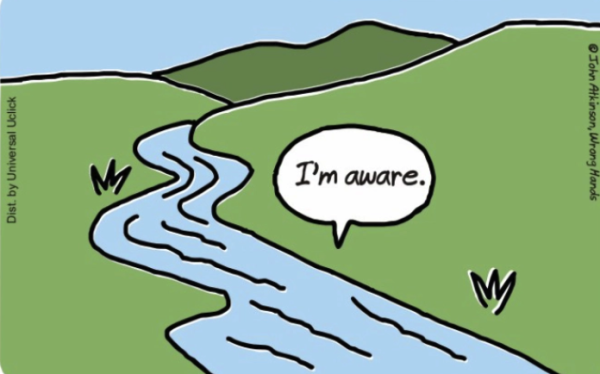Are you on the “coping with turmoil” side of TikTok?
I look down at my phone and see another Apple news update. Something horrible has gone on somewhere in the world, and there seems to be no reachable solution in sight. I retreat away from the real world and into my phone, where I enter the safe place that has brought me solace these many months, TikTok. I scroll through mindless videos until I realize it’s been an hour, and I feel no better about the situation, but I now know ten new useless facts and three new things are added to my wishlist. This could have been yesterday or a random Thursday in March; they all tend to blend together these days. People flock to social media for a collective sense of control. In real life, there is no solution to mammoth problems that plague all of us. There are no short-term solutions for a global pandemic or climate change or racial injustice. Still, the feeling of expressing our thoughts and emotions toward the situation and receiving validation from a wider net than you could have ever cast without social media provides a sense of control over problems we never thought we could have.
TikTok and Instagram are my social media platforms of choice. I spend way more time than I would care to admit scrolling my day away. They represent the complete opposite ends of the spectrum. Instagram is personal yet calculated. It’s a formulated catalog of how they want other people to perceive their life, a way to control people’s ideas of them. It’s more serious too. Posts on Instagram are not as haphazard as TikTok. TikTok is public and less refined. People tend to post TikToks with the hope that people from their real life will not find it. It’s way easier to scroll through people dancing in front of their college rejection letters or making fun of their childhood self rather than endless pictures of the tropical vacation your friend from summer camp just went on.
Social media trends represent the collective reaction and mood. How everyone is coping and what people’s opinions are. With limited ability to see and talk with tangible people during quarantine, the virtual connection with others became vital. Since March, I have noticed the different ways people respond to their situation. The roller coaster of emotions we all seem to experience mutually. I tend to be on the sarcastic side of TikTok. Instead of people discussing the storming of the capitol, my “For You” page was video after video making fun of that woman photographed at the capitol or comparing pictures of the man stealing a congressional podium to Chip Gaines from Fixer Upper. Poking fun at horrible events dulls the sting and diminishes their importance for people to digest them. The comments are arguably the best part of TikTok. People building off the joke and adding short, witty comments add to the comedic event. TikTok trends reflect the shared sense of humor internet users have cultivated by piling jokes up over time. Jokes made on the internet never would land or be understood outside of the context of that week’s trends. Reception to political turmoil and national distress has always been captured in news editorials or broadcasting segments. Opinions of those without a platform would have to be shared indirectly through interviews and subjected to the bias of those publishing. Now, a new picture of the everyday citizen’s reaction and opinion has been captured and shared through these 15-second videos or 150 words or fewer captions.
Social media activism is another large part of broadcasting our personal opinions online. A sharp increase in social media activism occurred in May with the unjust murders of George Floyd and developments in the cases of Ahmaud Arbery and Breonna Taylor. Posts linking to petitions and fundraisers flooded my Instagram feed. It feels like an Instagram account with a thousand followers would not be able to do much. A post would reach even fewer, and what change or awareness would that even bring? The positive results of sharing opinionated posts were evident when I scrolled through my Instagram and repeatedly saw the same post and knew that it was even more widespread. There is no way to determine how much engagement a regular Instagram post with links to fundraisers has gotten. Still, the chance of maybe spreading the post to one person who would extend it to one more is a beneficial aspect of sharing our opinions.
In light of global and national political turmoil, my first instinct was to check TikTok. I wanted to see how my peers reacted to events about which I did not know how to feel. I watched the live reporting of the election results, and rather than make light of the results, people on TikTok made fun of the overzealous ballet reporters. Instead of critically commenting on terrifying pictures from the attempted coup d’etat at the capitol, people made fun of news reporters and weird photos taken from the event. While I have seen countless Instagram posts praising Amanda Gorman’s performance or Joe Biden’s speech at the presidential inauguration, I have seen even more editing a picture of Bernie Sanders into the background of random photos. There are lots of different sides of the internet. I am sure more mature and well-informed people’s Instagram feeds were filled with educational posts. I think memes can do the same thing. They start a dialogue that may not be as seriously oriented. Still, it’s a digestible start to being informed and engaged with current events and provides collective control in an unprecedented year.


